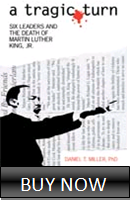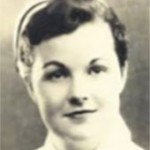
An eight-year old girl with dark, round eyes thought she heard some good news. Finally. Her parents seem excited. They are very political, active and full of opinions. That’s OK in peacetime but here…sometimes politics can kill you. The young girl stares at her parents and brother and sister. She’s searching for any sign that today’s news will, in fact, prove good.
November 3, 1918. Day 57 since influenza ran loose from Fort Devens, Massachusetts.
In Phoenix, Arizona influenza is killing one person per day. In Northfield, Minnesota the first case of influenza appears; no one knows if the patient will survive or not. The state of Washington’s health bureau orders that not only must a flu mask be worn, it has to cover your nose, mouth, and chin; public transportation must keep at least one-third of a rail car’s windows open; and restaurants must keep all windows and doors open. The Rocky Mountain News prints an article that explains how voters can go safely to the polls for the election two days from now.
The Administrative Board in Richmond, Virginia ends a bitter meeting no one will soon forget. Local Dr. Roy Flannagan has come to the board meeting with a recommendation to open up all public gatherings again, that the crisis point for influenza has passed. But he didn’t convince the board of that or, more pointedly, he didn’t convince enough of the board of that. In fact, the debate was hostile, the dialogue was sharp and cutting, and the vote was split 2-2. Adjournment followed. Everyone walked out of the meeting in a bad mood. Hard to tell how long the resentment might last. Dr. Flannagan leaves the meeting room dejected and unhappy. From his view, he has failed.
In France, near the Argonne forest, 26-year old John R. Adams, a private in the US Army, dies from influenza and pneumonia. He’s is a French hospital a long, long way from his hometown of Canton, Ohio.
Adams’s commander-in-chief, President Woodrow Wilson, is at the White House. He’s getting reports nearly every hour. Events are moving fast. Today, one of Germany’s key allies, the Austro-Hungarian Empire, has signed an armistice agreement to end their role in the war. There will be no more fighting—and especially no more bombing from the air—in Italy. Britain, France, the US, and a host of other nations have just taken a gigantic step toward final victory, toward new peace.
Wilson also receives word that a large group of German sailors have mutinied in the German port of Kiel. The German nation-state may be hours or days away from collapse, surrender, and armistice. The human enemy is dying at a quicker rate than the unhuman enemy.
Finally, in Moscow, Russia, the Bolsheviks hold a large rally to erect a monument. They want the ceremony to mark the one-year anniversary of the Russian Revolution. The statue symbolizes the powerful forces unleashed in Russia, forces which had helped spur Woodrow Wilson to seek entry into a world war he had always wanted to avoid.
The statue in downtown Moscow is of Robespierre, the anarchist-terrorist of the French Revolution who had advocated murder of men, women, and children for political ends.
And that’s why the eight-year old girl—Anjeze—with the politically active family is smart to be unsure about the meaning of today’s news. The news that ought to be good: her homeland of Skopje, Macedonia have been liberated by the Allies as part of Serbia, Albania, and Montenegro. Is her family now safe?
The young girl, who will one day be known as Mother Teresa, is frightened.
A thought for you on Day 57, April 23, 2020, fifty-seven days after President Trump declares Covid-19 a national emergency—acceleration on a different track—the World War has not gone away. Influenza continues to be fierce and deadly in 1918 but the momentum seems to have shifted downward. We’ve seen lots of evidence of this in various communities lifting the bans and prohibitions pertaining to the sickness. But all along, the World War was moving forward, both in northern and southern Europe. And now, the war has a new momentum and acceleration of its own, slashing and driving toward a conclusion, apparently. This other track of life—the World War track—will make itself known as a force of events. This fact has great meaning—it means that the World War will continue to interact with influenza so long as influenza exists in any major form. So it is with 2020. Life flows along many tracks—or currents, in my Life-as-River terminology—and we will find quite soon they will re-emerge and re-connect in a new way. What had drifted out of mind because of Covid-19, and had done so for all the right reasons, will then return to a more central role in our lives and awareness. Be ready for the return. Be ready to deal not only with a second wave of sickness but with multiple waves of other issues, trends, and moments that demand and seize your (and my) attention. You will likely be surprised. You may even be shocked. You can take a short time to deal with both reactions but quite sooner rather than later you’ll need to grip your leadership once again.

(note to reader—I invite you to subscribe to this series/blog. The purpose of my posting in this series is the purpose of my enterprise at Historical Solutions—to explore the past in a new way that brings new and different value to you, both in the present (this minute) and on the edge of the future (what’s ahead or forward of this minute). The past is everything before now, the totality of all time before the present; history is a set of very small slices of the past that, for a particular reason, have been remembered. If you wish to contact me privately, please do not hesitate to text or call 317-407-3687)







